MGM Grand Casino: Systems, Recycling, and Goals Are Key to Sustainability Efforts
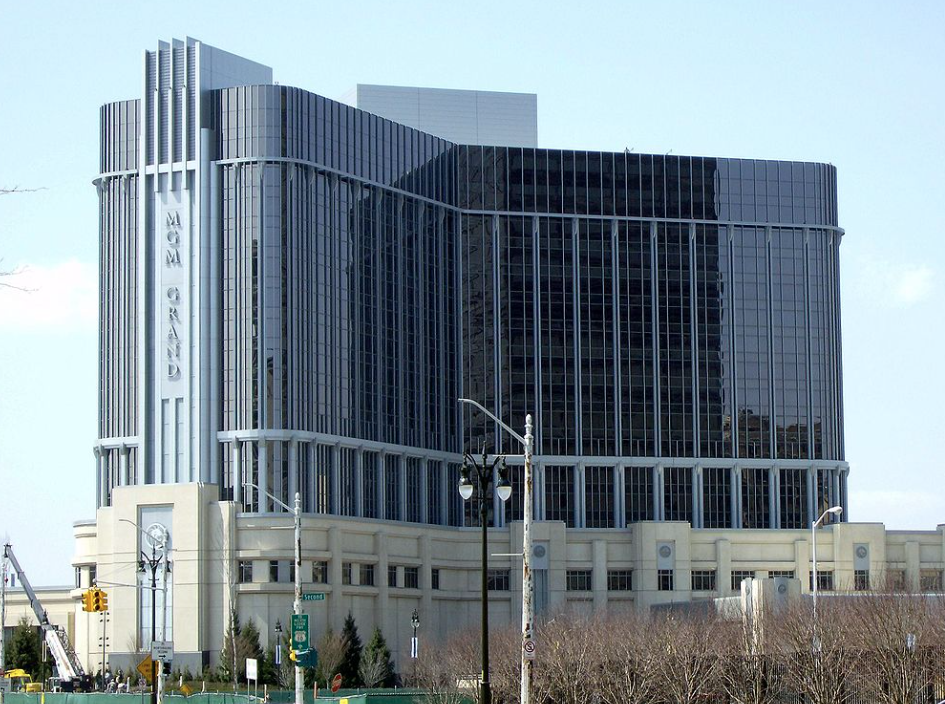
MGM Grand Detroit is one of three casino resort hotels in Detroit and one of four in the Detroit–Windsor area. It is owned by Vici Properties and operated by MGM Resorts International. The hotel opened in 2007. SBN Detroit interviewed Jay Love, vice president of facilities, and Carlton Dennard, director of environmental science and housekeeping, about sustainability planning and efforts in facilities and maintenance. Love said he is responsible for “anything that moves water or air within the facility.” He oversees general maintenance and works to improve processes and services for guests, as well as contributing to the maintenance strategy to extend the life of equipment and assets within the casino and hotel. Denard has been with MGM Grand Detroit since it opened and oversees a team of 250. He is responsible for the game floor and front and back of the house and the cleanliness of 400 guest rooms. Q: What type of sustainability planning does MGM Grand Detroit do? Dennard: In my role – among other things – we are heavily focused on recycling and it’s been a big commitment since day one in 2007. The goals that corporate institutes continually evolve, and we follow their lead. Love: Our corporate leadership team in Las Vegas rolls out a plan for every property each year. We pursue sustainability efforts in line with that. We’re committed to sustainability and reducing our environmental impact, while also contributing to economic growth in the region. Q: What are some of your current initiatives and goals in sustainability? Dennard: We are working on surpassing our annual recycling numbers. Last year we recycled 280k pounds and we are looking to continually increase these recycling efforts. When it comes to energy, our goal is to convert to 100% renewable energy by 2030. One example of work there is replacing all lights with LED bulbs. When it comes to housekeeping, we use environmentally friendly chemicals and cleaners. Ecolab supplies the resorts with chemicals daily. We also have a Green Advantage Program. If guests are staying for more than two nights, they can opt to reuse towels to decrease the waste involved in replacing towels. Love: The facilities department is working to reduce electrical consumption by 2.5% this year. This is done by adjusting set points to ensure units are not running as long or as hard, installing occupancy sensors, and making sure our mechanical equipment runs efficiently. So, we are really focusing on chillers, chilled water setpoints, boilers, boiler setpoints, heat exchangers, and that type of equipment. We’ve done a lot of preventive maintenance to ensure that the equipment operates as efficiently as possible. Longer-term goals are to reduce carbon emissions per square foot by 45%, and water by 33%. Toward these goals – and others – we have best practices laid out by our corporate office. Q: What are your biggest challenges? Dennard: It’s critical to remain proactive instead of reactive and with a facility of this size, that can be challenging. Love: Staying in front of reactive repairs to minimize the impact on the operation is key. If a boiler goes down, we need to have a redundancy in place, so we are ready to roll right away. And from a sustainability standpoint again, maintenance and ensuring efficiencies are key. Q: How does sustainability come into play when choosing vendors and partners? Dennard: There is a bid process used when selecting vendors and sustainability plays a large factor in our decisions. Love: It weighs heavily in all of our decisions. We go through a strict and thorough process with the purchasing department to approve all vendors. Also, to ensure all equipment purchased is up to spec and within sustainability guidelines. We will always consider bringing on new and local vendors to continue to diversify and support the economy. Q: How do you think your sustainability work impacts the businesses and communities around you? Dennard: Going back to recycling as one example on my end – MGM is responsible for 17% of recycling in the city of Detroit. I’m proud of that number and looking to grow it. We are working toward collaborating with other casinos in the city to that end. That has a significant impact on the community around us and the city of Detroit. Love: I think there is a huge impact. Any time we roll out a new initiative we try to use local businesses and minority-owned businesses to help the local economy and also to set an example. I think there is a domino effect. I think our commitment to sustainability demonstrates that economic growth and environmental responsibility can coexist, creating a better future for everyone. More about MGM Detroit’s environmental efforts can be found here Be sure to subscribe to our newsletter for regular updates on sustainable business practices in and around Detroit.
SEMCOG Working to Develop Plan to Reduce Greenhouse Gas Emissions

The Detroit-Warren-Dearborn Metropolitan Statistical Area (MSA) recently was allocated $1 million to develop a plan for reducing greenhouse gas emissions and other harmful air pollution through the US-EPA’s Climate Pollution Reduction Grants (CPRG) program. The plan will cover the MSA’s six counties – Wayne, Oakland, Macomb, St. Clair, Livingston, and Lapeer – as well as Washtenaw and Monroe counties. The Southeast Michigan Council of Governments (SEMCOG), which is the lead agency for Southeast Michigan’s Climate Action Plan, will manage the funds. The plan is in place to help local governments improve and maintain Southeast Michigan’s transportation systems, environmental quality, economic interests, and infrastructure. SBN interviewed SEMCOG Planning Director Kevin Vettraino about what this will involve, how it will roll out, and how it impacts businesses, residents, and communities in Southeast Michigan. Q: Tell us about SEMCOG. A: SEMCOG is the regional planning organization for the seven counties that make up the Southeast Michigan region: Livingston, Macomb, Monroe, Oakland, St. Clair, Washtenaw, and Wayne counties. Our primary mission is to support our local government members, including counties, cities, villages, townships, and educational institutions. We work to improve the quality of the region’s water, make the transportation system safer and more efficient, revitalize communities, and spur economic development. These things shape the areas we get involved in. I like to say we focus on planning for the issues or opportunities that cross geographic or community boundaries, such as roads, rivers, lakes, air, and the economy. Q: The U.S. Environmental Protection Agency allocated $1 million to develop plans for reducing greenhouse gas emissions, and SEMCOG is acting as the lead agency to develop a climate action plan. What will this entail? A: At a high level, the plan will establish community-developed and evidence-based methods to reduce greenhouse gas emissions that will meet the requirements of the EPA and CPRG. One approach is to enhance natural areas that capture carbon. The plan will also integrate extensive stakeholder outreach and input, along with equity considerations, and consider the impact of policies, strategies, and actions from the regional level down to the household level. This work complements the recently adopted Southeast Michigan GREEN: Strategic Framework for Growing our Resilience, Equity, and Economy with Nature, which is an initiative to address some of the region’s most pressing challenges – managing floods, fostering climate resilience, improving community health, and protecting our natural assets – all while creating vibrant places where people want to live and where businesses will thrive. Q: What is the next step and timeframe for action? A: The next step will be launching a task force with the intent to meet at least eight times over two years. Part of the large overarching task force will be smaller focus groups that will cover more specific parts of the plan. The focus groups have not been formed yet, but they are likely to focus on transit, energy efficiencies, EVs and the impacts of the transition, materials management, and nature-based opportunities and impacts. Beyond the focus groups is community engagement. This is critical for success. It’s important for us to have a two-pronged approach here, that being education and data sharing and also public engagement and input. Q: What does community engagement entail? A: Surveys, local meetings, webinars, and other outreach with a lens toward ensuring that the benefits and policies that come out of this work support all residents, including lower-income residents. These people have traditionally been underrepresented and more impacted, and we need to ensure that any actions we take support them and don’t further negatively impact them. Q: How will this impact Southeast Michigan businesses and communities? A: My hope is that through our work there is an education component. In basic terms, we need to make sure we are speaking the same language. There are a lot of terms around climate action such as equity, green infrastructure, etc., and we need to ensure that whether you are a business, community, government entity, or a resident, we all have a similar understanding regarding what these terms mean and why they are important. I hope that business leaders can see themselves within the strategies, policies, and actions that come out of this work and align with them. We all have a role to play in this. This plan will not be the silver bullet that can solve the climate challenges in the region but all of us together can make an impact. From installing a green roof or rain garden to ensuring all people have safe facilities to walk or bike to destinations, whether it’s a sidewalk or bike path or considering nature-based and green infrastructure solutions when putting in a new parking lot or reconstructing a roadway, there are things we all need to be thinking about and doing. Q: What are your main challenges? A: Again, it’s getting a common set of words and a familiar language. It’s also about education and making everyone understand the importance of the plan, and working toward a healthier region, and putting sustainability practices in place to support our climate long into the future. A lot of our work targets dates far into the future, such as 2050, and sometimes it’s difficult to get buy-in when it’s so long-term. The challenge is we need buy-in and immediate action to get to where we want on the horizon. Q: What are the main opportunities? A: First, we have the $1 million funding to help develop a plan, inventory our greenhouse gas emissions, and develop policies – which is great. Through the development of this plan, the region and our communities and businesses will become competitive for an estimated $4.6 billion in EPA grant funding for implementation. Second, if we are able to get folks both in leadership and residents across the region to both understand the importance of the action plan and to be intentional about environmental justice and the allocation of funds and the action to support those directly impacted, that is a great success. Q:
Vehya – Working to Help Consumers and Businesses Electrify Faster
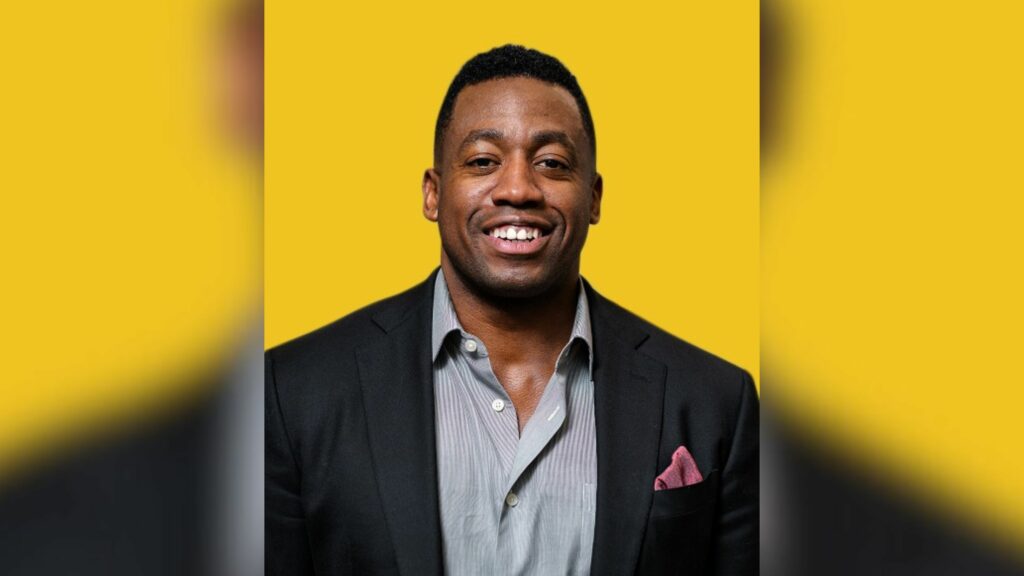
Detroit-based Vehya is a two-year-old marketplace, which offers services to businesses and individuals looking to adopt EV technology. SBN Detroit interviewed founder and CEO William McCoy to find out more. Q: What can you tell us about Vehya? A: Vehya (pronounced and meaning “via”) is a marketplace for electrification. With everyone moving (or trying to move to) electrification quickly for a sustainable future, we know the project management – research, execution, installation, maintenance – portion can be challenging. So, we created a platform that makes that process easy. Before, if a consumer or office wanted to get an easy charger, they would have to find an electrician, vet them, research products to find the best solution, schedule installation, etc. Vehya turns those steps into a turnkey process. We sell electric vehicle chargers, solar, battery storage, and other resiliency products and have a network of certified service providers to install and service them. Q: Are the end users consumers or businesses? A: Both. In the beginning, we focused more on the commercial and quickly realized there was just as much of a need on the consumer side. The people we were working with on commercial projects were asking if we could do this for them at their homes, or for their clients so we created a consumer-facing platform as well. Q: What needs do you believe Vehya solves? A: People and businesses that are looking to transition to electric often do not have the time or resources for the research and logistics involved. So, we fill that gap. Early adopters will jump in and figure it out, but for others – for the mainstream – they need help. We streamline the process to help both consumers and businesses electrify faster. Q: Tell me about your new partnership with DTE. A: DTE was looking to help their customers streamline the process of obtaining electric vehicle chargers both from a financial and logistical standpoint. They launched an RFP and ultimately chose Vehya for this partnership, which we are so happy to participate in. It’s a fantastic program because it opens the door for many more people to make the transition to EV who couldn’t without the financing DTE’s program offers. Further, many homes need service panel upgrades to support EV charging and that is an additional cost, so the financing becomes even more important. Customers can now come onto the platform, buy a charger and have it shipped to their home, identify an electrician to install it, and sign up for financing all in one place. Through this program, we’ve had about 2,500 enter the platform chargers and have facilitated close to 400 installs in the three months since it launched. Q: Tell me about the partnership with Stellantis A: In March, we became a preferred partner for EV charger sales, installation, and maintenance for Stellantis’ U.S. auto dealers. Our program includes Vehya-certified electricians, detailed site surveys, comprehensive estimates, and a dedicated account manager that handles all administrative and project management duties. Q: How is the Vehya marketplace different than other platforms? A: The fact that we offer products, service providers, and project management is different than other platforms. You can buy a charger on a marketplace like Amazon but then you have to figure out the installation. We vet and certify our service providers as well. Q: Tell me about that vetting and certification process. A: Most of our electricians are certified by the Electric Vehicle Infrastructure Training Program (EVITP). We then certify them regarding experience and licensing. They must have the highest levels of insurance. And we do a background check. Q: How do you think the work you do impacts Southeast Michigan businesses? A: A lot of businesses want to electrify their fleets and company cars but don’t know where to start and don’t have the resources to do the research. Workforce development and job creation are also important pieces to us. Vehya is the marketplace that connects consumers and businesses with highly qualified service providers. It connects these service providers to people raising their hands for help in turn creating and bolstering careers. Q: What does the future look like for the company? A: We are working to make our online processes even quicker and to scale our offering. We are also working with underserviced communities to take advantage of EV transition opportunities as well. Financing is key. An average install in the Detroit area is $2,300, because as I had mentioned, a service panel upgrade is typically needed. We are working with banks now to put together consumer packaging to spur adoption and make it easier for more people. Equity and inclusion have to be considered – we need everyone to be a part of this. Be sure to subscribe to our newsletter for regular updates on sustainable business practices in and around Detroit.
A Focus on Housing and Commercial Corridor Stabilization
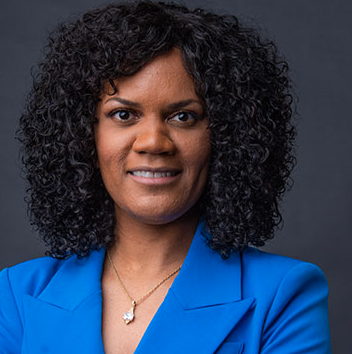
Detroit native and Councilwoman Latisha Johnson has been active in the community for 15 years and represents Detroit City Council District 4 on the east side of the city bordering Harper Woods and Grosse Pointe, a community she’s lived in most of her life. She attended Detroit Public Schools and graduated from the University of Michigan- Dearborn, where she earned a degree in finance. She began her career in Detroit’s tourism industry, marketing the city to visitors to attract spending within the local economy. Johnson began her public service in 2007 when she became vice president of the East English Village Neighborhood Association. During her tenure, she led efforts to eliminate blight, hold financial institutions accountable, and prevent residential property tax foreclosures. In 2014, she founded MECCA Development Corp. to address concerns of well-being, workforce development, youth engagement, and neighborhood revitalization. She has also has served as treasurer for the 5th Precinct Police/Community Relations Council, vice chair of the City of Detroit’s Board of Zoning Appeals; member of the Wayne Metro Community Action Agency Regional Advisory Council, and was a volunteer with Wayne State University’s AmeriCorps Urban Safety Program. SBN Detroit spoke to Johnson about her sustainability goals and about how residential development and business development go hand in hand. Q: What are your primary goals for sustainability in the city? A: One key thing is the evaluation of our internal processes. I co-chair the Small Business Task Force with two council colleagues, Mary Waters, and Angela Whitfield-Calloway. Our focus is to ensure that our requirements and practices for small businesses to bid on projects are not insurmountable. One example that came to light just recently: We had a contract come before us, and our procurement team had to make calls to companies to encourage them to bid. In a healthier environment, we should have contractors knocking on our door to bid on projects. This showed us that a lot of companies are overwhelmed by our processes. Small businesses just don’t have the resources to navigate them, so we are now trying to streamline the system and reduce paperwork and red tape. We want to find ways to help grow small businesses, particularly in the neighborhoods of Detroit. Q: In 2014, you founded MECCA Development Corp. to address concerns of well-being, workforce development, youth engagement, and neighborhood revitalization. How does this work impact and inform your role as a councilwoman? A: It definitely impacts what I do now. MECCA had four areas of focus: workforce development; residential development; seniors; and youth. The area I became passionate about – especially as we saw property values climbing – was and is residential development. Houses have become unattainable for lower-income families in this climate. Too many people cannot afford the down payments and can’t qualify for loans. Now I’m hyperfocused on affordable home ownership. This also comes from who I am as a Detroit native who grew up in a lower-income household. I have firsthand experience with these challenges. Therefore, I’m working on programs and opportunities to assist. We recently started a Down Payment Assistance Program to provide up to $25,000 for lower-income renters who want to purchase a house in the city. I’m also working on getting the city of Detroit to support Community Land Trusts. I recently worked with a group of students from the University of Michigan to understand how split-rate taxes (which tax vacant land at a higher rate than structures and improvements) would impact Detroit homeowners. I also established the Equitable Development Task Force, which focuses on addressing underserved communities through policies and programs that reduce disparities while fostering places that are healthy and vibrant. The task force may include residents, representatives from the community, labor, the business sector, as well as any other individuals interested in participating. So yes, MECCA helped shape and inform the work I do around housing and home ownership. I’m always striving to find ways to provide support to low-income families. Q: How do you think residential development impacts businesses in Detroit? A: When I look at our district, the areas that have benefited from the Strategic Neighborhood Fund – Jefferson, East Warren, and now Gratiot – are the areas in which residential properties have also stabilized. So, we know that revitalizing commercial corridors helps stabilize residential, and vice versa. More businesses will come into these areas – it’s cyclical. I’d also like to see people having the opportunity to build equity in their homes that they can pull out to start their own businesses and build generational wealth. It all connects. Years ago, when I worked at Detroit Convention and Visitors Bureau, and we hosted site inspections, we had to craft the routes to prevent taking clients through blighted commercial corridors. When commercial corridors look a certain way, it gives the impression that the neighborhoods are even worse. So, we need more of a focus on both housing and commercial corridors to become stabilized, and they depend on one another to do so. Q: What are the biggest challenges you face? A: First, the tax rate in Detroit. It’s a challenge for residents and businesses. Second, is the lack of promotion of our neighborhoods and commercial corridors to encourage businesses to establish there. No entity proactively promotes and connects entrepreneurs to these communities. There is a big opportunity there. Q: What are other opportunities for the city, and how will these affect businesses? A: As I mentioned earlier, there is an opportunity to streamline the city’s internal processes so that smaller businesses can bid on and secure projects. Another opportunity is the promotion of harmonious growth between business communities and residential communities. We have not done that well. I think businesses and communities can work together better to support one another. When a business does this, it will inherently last longer in the community And when it comes to bringing industry and manufacturing to certain areas, the city has to do a better job of ensuring that we are protecting residents.
Consumers Energy’s PowerMIFleet Program Grows to 50+ Companies
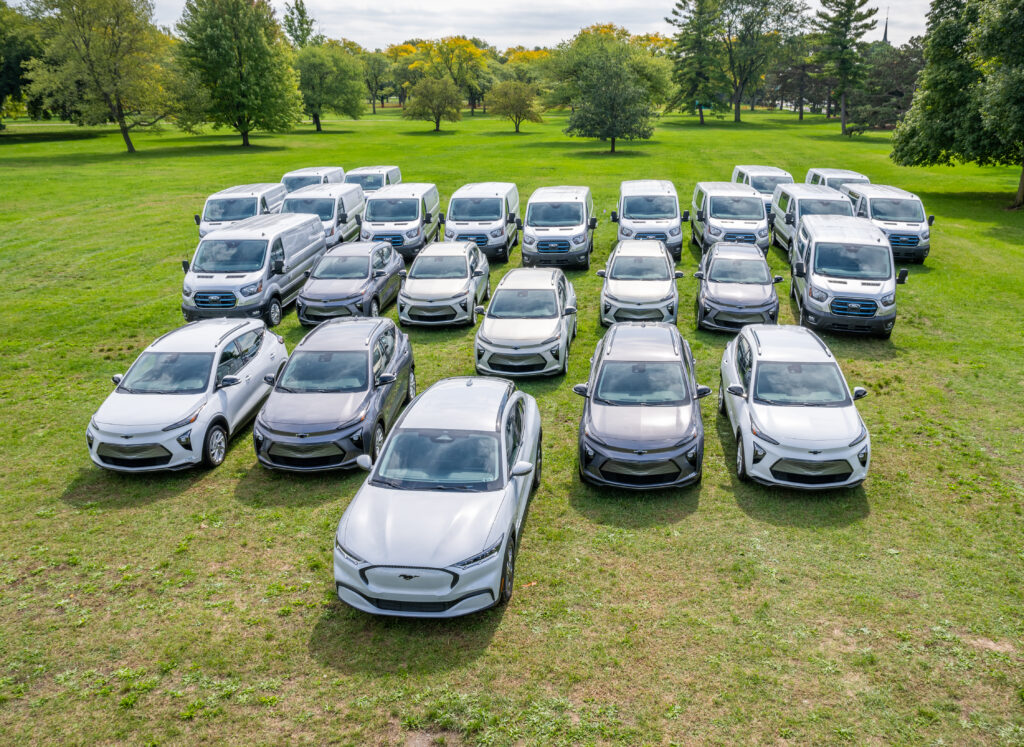
Consumers Energy launched its PowerMIFleet program 19 months ago to augment its existing PowerMIDrive. The latter program, launched in 2019, is targeted to smaller users and offers lower electric rates for off-peak charging for drivers and will provide rebates for residential, business, and public charging stations. More than 2,700 have been granted so far. PowerMIFleet was launched in mid-2021 to build on that program by connecting businesses, large institutions, local governments, and school bus fleets with planning resources, expert guidance, and financial incentives to easily and cost-effectively transition to electric vehicles. One of those large institutions, Michigan State University, is deep in the throes of transitioning 369 vehicles in its fleet of 1,200 internal-combustion vehicles to electric vehicles over the next decade and is working with Consumers Energy and the PowerMIFleet program to do so. SBN Detroit spoke with two individuals deeply involved in MSU’s process, beginning with Jeff Myrom, Consumers Energy director of electric transportation customer programs, and Adam Lawver, director of Campus Services Infrastructure Planning and Facilities at Michigan State University, to gain insights into the process and how it works for Michigan businesses. Q: Jeff, first tell us about the PowerMIFleet program. Myrom: PowerMIFleet is a program designed to help business owners, municipalities, and educational institutions charge off-peak to reduce operating costs, eliminate emissions, and simplify vehicle maintenance by transitioning to electric vehicles. This is a program for those looking to electrify multiple vehicles and potentially a variety of vehicle classes. This, along with PowerMIDrive, is aimed at gaining insights and learnings and then sharing those learnings with different sectors so we can optimize success in the future, and it supports the statewide goal of having 2 million EVs on our state roads by 2030. Q: How long have these programs been in existence? Myrom: PowerMIDrive has been in place for a little over three years. We are getting ready to convert the residential portion of this pilot to a permanent program. PowerMIFleet launched in June of 2021 and has been so successful that it’s now fully subscribed. Q: What is involved in the PowerMIFleet Pilot Program? Myrom: Essentially there are three phases. In this first phase, we are working with fifty customers across a wide geographic base within different industries and sectors. We conduct full assessments regarding their fleets and then develop a five-year plan for conversion and infrastructure. This longer-term plan allows us to build for the future now versus having multiple infrastructure upgrades over time. In Phase Two we move forward with EV infrastructure development and the purchase cycle begins for the customer. Phase Three involves taking a look at the actual experience with electrification to see if the infrastructure is adequate and circling back on lessons learned. For PowerMIFleet, this will take place in 2024. Q: Who are you working with through PowerMIFleet in addition to MSU? Myrom: We are currently working with over 50 customers, including several school districts. For example, Jackson Public Schools are looking to acquire 21 electric school buses. Homer Community School District is bringing on seven electric buses. We are working with Domino’s Pizza on their rollout of 800 GM Chevy Bolt electric vehicles now. We will publish our lessons learned from the vehicle electrification assessments starting in Q1 of 2023 and move from there. Q: What challenges do you face? Myrom: Vehicle availability and costs are a challenge. We recognize that until the supply chain is improved this will be the case. Another potential challenge for those with large fleets is adopting time-of-use rates. Usage across the state is highest between 2 p.m. and 7 p.m. We are offering several different time-of-use options to minimize costs for businesses and help alleviate this challenge. A good example of this is the work we are doing with Michigan State University. The PowerMIFleet program is providing rebates to MSU toward their charger installation costs, and we’ve supported the grid upgrades needed, as they prepared to take delivery of forty new EVs in September. Michigan State University is clearly a leader in fleet electrification, and one of the first movers in the PowerMIFleet pilot. Partnering with a leading educational institution like Michigan State University is a real boost to our fleet pilot learnings. Q: Adam, what should we know about your conversion to electrification with Consumers Energy and PowerMIFleet? Lawver: As part of our strategic plan goal of achieving climate neutrality by 2050 and reducing greenhouse gas emissions by 50% from its 2010 baseline, we are converting 369 internal combustion engine vehicles to fully electric vehicles over the next decade. The conversion will decrease the university’s overall carbon footprint by 18,945 metric tons of carbon dioxide long-term – the equivalent of planting 312,584 trees. In September 2021, we connected with Consumers and its PowerMIFleet program. Together we assessed our 1,200 vehicles and built fleet electrification roadmap. Now, one year later we’ve received all 40 vehicles of the initial order and are in process of connecting charging stations. Q: What manufacturers are you working with to build your fleet? Lawver: We selected different types and manufacturers, according to what they’d be used for. Some vehicles are used to move people short distances, some are utility vehicles, some are used by staff to travel around the state for meetings, and so forth, so they all have different uses and needs. So far, we have purchased a combination of Ford E-Transit Vans, Ford F150 Lightening Electric Trucks, Ford Mustang Mach-E’s,Chevy Bolts, and Tesla Model 3s. Q: What can businesses learn from your current experience of electrification and working with PowerMIFleet? Lawver: I think small businesses with a few delivery vans up to entities with large fleets would benefit from completing a fleet analysis and considering electrification. I think you first need to look at the total cost of ownership of your vehicles. Each business owner needs to assess that and evaluate it over their fleet and see if there is a good alternative to convert to decrease their carbon footprint. Then, build a roadmap for
How Does Consumers Energy Activate Around People, the Planet, and Prosperity?
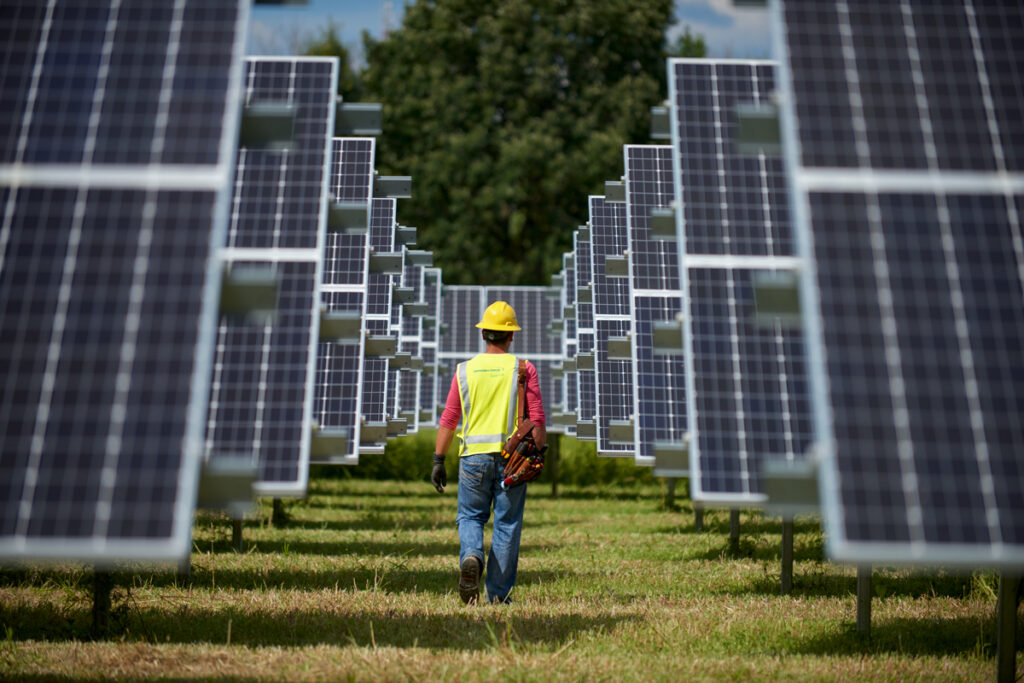
How does Consumers Energy, which provides natural gas and electricity to 6.7 million of Michigan’s 10 million residents, with 8,000+ staff members, approach sustainability? SBN Detroit spoke to Brandon Hofmeister, Senior Vice President of Governmental, Regulatory and Public Affairs for CMS Energy and Consumers Energy, about how the company executes its sustainability goals and about some of its current projects. Q: When did you begin sustainability efforts at Consumers Energy? A: From a very broad sense, the company has been focused on sustainability since it was founded. Our current intentional focus to prioritize sustainability specifically within our corporate strategy has been around for about a decade. Q: What is the organizational structure around executing your sustainability goals? A: Our corporate strategy is centered around a triple bottom line of people, planet, and prosperity with measurable goals that cascade down throughout the whole business and that are embedded in everything we do. We don’t necessarily source it to one department or team. We do have an Environment and Sustainability Council that includes top leaders and executives and officers who meet regularly to monitor progress toward key sustainability goals. We also have a Chief Diversity Officer and a focus on diversity, equity, and inclusion, and this overlaps and encompasses our sustainability objectives. It’s very cross-functional – everyone owns it and it’s embedded within all roles and levels of the company. Q; Please give some examples of initiatives and priorities in place around people, planet and prosperity. A: Regarding the planet, I would say our biggest initiative is transforming our electricity generation mix. We will retire our remaining coal plants in 2025 and move completely to clean energy, reducing carbon emissions by 60% from 2005 levels. This is a very aggressive goal but as a company, we are excited about it. From a people perspective, we are focused on dramatically improving electric reliability by hardening systems to stand up to more intense storm activity and leveraging best practices in technology and management to reduce outages. We are also deeply focused on the affordability of our services. We’re doing a lot of work to create payment and assistance and energy efficiency programs. We are also dedicated to finding ways to take cost out of our processes and the cost we pass on to our customers, so they get the best value for the services provided. This is equally important for our business customers. We must make sure electricity is cost-effective so businesses can continue to thrive and create jobs here in Michigan. Regarding prosperity, part of the triple bottom line is keeping our own business healthy and profitable for our staff and also our investors. We are expected to deliver consistent and low-risk financial results and that affects our community and the economy overall. Q: Consumers Energy employs more than 8,000 people. How do you share the vision and facilitate action? A: How we approach the goals in itself is important and I think has been impactful. We set breakthrough goals and unleash the team to find new and innovative solutions. It is challenging to set goals that we don’t yet know how to achieve, but this can also be very inspiring, as long as you give the “why” behind the goal. Our team inherently works for our friends and neighbors, and we want to deliver for them. So, whether it’s decreasing carbon emissions or increasing electric reliability, we set goals, give the why, and then let the power of the people take it forward. The outcomes are often quite remarkable and solutions we never thought possible are unveiled. Q: What do you think is one of the most impactful sustainability practices you’ve put into place to date? A: Our clean energy program is a good example. We set an ambitious goal to get to net zero carbon emissions by 2040. Within the framework of conventional wisdom, this originally appeared to be impossible. But the goal has opened up new ways of thinking. Retiring the coal plants was originally slated for 2040, but that’s been moved up to 2025 as I mentioned. We have a north star to reach and are working on this carbon goal every day. Q: What do you point to as an impactful project you are putting into place in the next three to five years? A: Electrification of vehicles is a big game changer for our industry. The company has a breakthrough goal to have a million EVs in service by 2030. This is great for the planet and great for our customers’ pocketbooks. The more electricity we all use, the more electric bills decrease. There are set costs for infrastructure, and if more people are using that infrastructure the cost per unit of electricity goes down. So, it’s a win-win. Q: How do you integrate the community and keep them informed? A: This is a huge part of our work. We spend a lot of time communicating what we are working on and why, but it’s a two-way street. We also want to understand the people and community we serve, so we conduct formal and informal stakeholder outreach. We do materiality assessments internally and externally. We engage customers and educate them on how they can save energy by considering an electric vehicle or participating in renewable energy programs. Most people don’t think about their utility service unless the power out goes out, but it’s important to continually communicate our broader mission. We spend time engaging in a variety of channels with customers to have two-way communication. Q: What advice would you give to SE Michigan businesses when it comes to laying out sustainability goals and achieving them? A: Start with what’s important to the business. Understand the impact the business is having and focus on a goal. Also engage stakeholders. Set ambitious goals and always communicate the why. It’s easier to bring people in when they are engaged versus being told. And finally, don’t have too many goals. Prioritize, set a few very ambitious and solid goals,
Detroiters Working for Environmental Justice Working Hard to Eliminate Health Disparities in Detroit
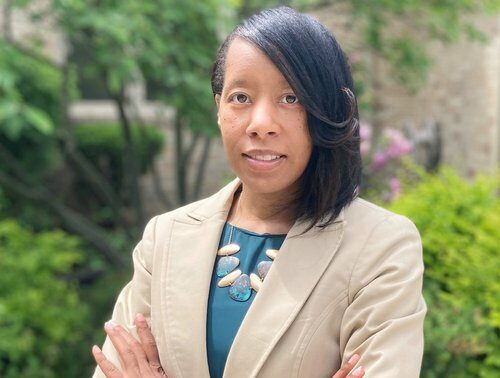
SBN Detroit talked to Laprisha Berry Daniels, Executive Director of Detroiters Working for Environmental Justice (DWEJ), an environmental/social justice organization committed to community engagement and policy change that lifts the voices of Detroiters. Daniels holds a bachelor’s degree in psychology from Michigan State University, as well as master’s degrees in social work and public health from the University of Michigan. With over 20 years of public health experience, she has been responsible for developing, implementing, and evaluating efforts focused on eliminating some of the most stubborn health disparities. Here she shares her thoughts and work in disrupting and dismantling the status quo to ultimately eliminate environmental health disparities in Detroit. Q: In June 2021 you took on the role of executive director for Detroiters Working for Environmental Justice. What is involved here? A: The work of Detroiters Working for Environmental Justice (DWEJ) started over 30 years ago. The vision then and now is to make certain all people benefit from environmental policies and practices that value the voices and reflect the will of impacted communities. As the executive director, I work with internal and external partners to challenge structures/systems that perpetuate racist and classist policies that negatively impact the well-being of Detroit and Detroiters. DWEJ is currently working with national organizers and local champions to push for adding a Green Amendment to the state’s constitution. Q: What are your short-term and longer-term goals and how will you reach them? A: DWEJ currently focuses on reducing environmental health disparities, specifically those related to asthma, lead poisoning, and cardiovascular disease (CVD). Our approaches to reducing these disparities involve combining education about illness related to environmental hazards with political action to reduce the environmental factors that lead to disease. Two recent efforts involved engaging community members around making public comments – first, at Detroit city council meetings to object to proposed changes in a rental ordinance that would put more children at risk for having elevated blood lead levels that compromise the physical and mental health of children and pregnant persons, and second, before the zoning appeals board to urge officials to protect the health and well-being of residents by denying a permit to have a new asphalt facility in northwest Detroit. Overall, we focus collaboration, outreach, education, and advocacy efforts on improving the natural and built environment so that the physical, spiritual, mental, and economic health of Detroiters is improved, protected, and maintained. Q: What are the biggest challenges? A: If Detroit is going to be a model city for sustainability, nonprofits, for-profits, industry, education systems, health systems, government, art institutions, etc. – and I think we can be – we must all work together as we look for creative and innovative solutions to challenges. We must honor the ideas, perspectives, voices, actions, and leadership of the communities impacted by decisions that are being made. We must listen to the people in the areas we work in – the daily issues that impact their lives. Q: What drives your passion here? A: I believe that anyone, anywhere can collaborate for the greater good. I have been part of some unlikely alliances that have created transformative change. For example, in previous work, I was responsible for recruiting volunteers ages 55 and up to read to elementary school students. I facilitated relationships with local motorcycle clubs and had bearded, tatted bikers volunteering to read to third graders, encouraging academic achievement and helping to improve school climate. I’m ready to be part of that process as we focus on transforming the way we collectively “do business” as consumers and producers in Detroit. Q: From your perspective – what is the role of businesses in Detroit in terms of sustainability overall for the city? Businesses of all sizes with varying goals, visions, and missions can engage in co-learning, collaboration, and collective action. Many of the challenges that we are facing are the result of a few making decisions that will impact many. Therein lies the problem. The biggest challenge to sustainability, in business and beyond, is clinging to the status quo or “business as usual.” We have to engage in some business that is unusual. For far too long the blame for environmental woes and the measures to fix the issues have been passed on to individuals. We can shift the conversation from asking individuals to reduce, reuse, and recycle to expecting businesses, especially big businesses, to respect, restore, and replenish. Q: What are businesses in Detroit that are doing it well? A: Pingree Detroit comes to mind when I think of sustainability, innovation, creativity, and collaboration. They serve as a prime example of how businesses of varying sizes that have varying impacts on the ecosystem can partner. Be sure to subscribe to our newsletter for regular updates on sustainable business practices in and around Detroit.


